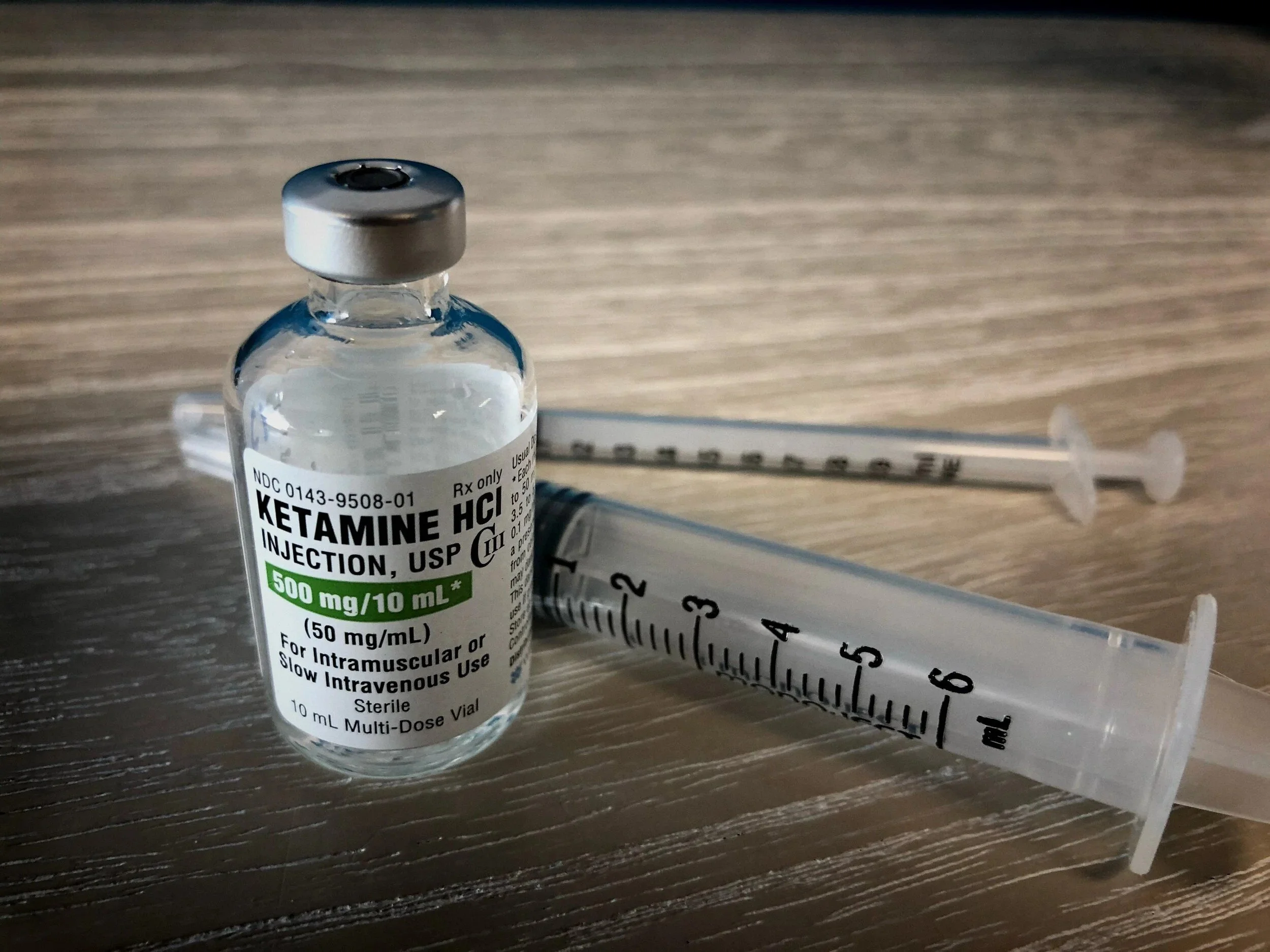Does Ketamine Make ADHD Worse? What Research and Case Studies Say
Ketamine therapy has become more common in recent years, especially for people struggling with depression, anxiety, PTSD, and chronic pain. Because many individuals with ADHD also live with these conditions, they often wonder: Does ketamine make ADHD worse?
Some patients report feeling calmer or more focused after ketamine treatments. Others say they feel more distracted, restless, or emotionally sensitive. With so many mixed experiences, it is natural to ask whether ketamine helps or worsens ADHD symptoms. While research is still developing, early studies and clinical observations give us helpful clues.
This guide explains how ketamine works, how it interacts with ADHD symptoms, why some people notice improvement, and why others feel temporarily worse. The goal is to help you understand what is happening in the brain so you can make informed decisions about your mental health.
Understanding ADHD and How It Affects the Brain
ADHD affects the brain networks responsible for:
Attention and focus
Emotional regulation
Impulse control
Working memory
Planning and organization
Motivation
People with ADHD have differences in dopamine and norepinephrine activity, which can make focusing, completing tasks, and managing emotions more difficult. ADHD also affects how the brain responds to new medications, including ketamine.
Because ADHD brains already work harder to regulate emotions and stay organized, anything that alters brain chemistry including ketamine can temporarily shift symptoms.
What Ketamine Is and How It Works
Ketamine was originally developed as an anesthetic. Today, doctors use low-dose ketamine or ketamine assisted therapy to help treat:
Treatment-resistant depression
Severe anxiety
PTSD
Chronic pain
Suicidal thoughts
How ketamine affects the brain
Ketamine increases glutamate, a neurotransmitter that helps the brain form new connections. It also boosts neuroplasticity, which means the brain becomes more flexible and open to change.
People often describe ketamine as:
Calming
Dissociative
Emotionally freeing
Mentally shifting
But because it temporarily alters perception and thinking, it can also influence attention, impulsivity, and emotional responses, all important in ADHD.
Can Ketamine Make ADHD Worse?
Here is the most important takeaway:
Research does not show that ketamine directly worsens ADHD, but it can temporarily intensify certain symptoms in some people.
Responses vary widely. Some individuals with ADHD say ketamine helps them feel more relaxed and emotionally clear. Others say it increases their distractibility, restlessness, or impulsivity for a short time.
The differences come from:
Individual brain chemistry
Dosage
Sensitivity to dissociation
ADHD-related emotional regulation challenges
Co-occurring conditions like anxiety
Sleep quality after treatment
So while ketamine does not cause ADHD or make it permanently worse, it can temporarily shift the severity of symptoms.
Six Reasons Why Ketamine Might Worsen ADHD Symptoms
Not everyone with ADHD has a negative experience, but here are the most common reasons ADHD symptoms may feel worse after ketamine treatment.
1. Increased Restlessness or Hyperactivity
Some people feel physically or mentally "wired" during or after ketamine sessions. This can feel like heightened ADHD restlessness or hyperactivity.
2. Dissociation Can Make Focus Harder
One of ketamine's primary effects is dissociation, a sense of detachment or mental fog. For people with ADHD, even mild dissociation can make:
Attention weaker
Thoughts more scattered
Planning more difficult
Conversations are harder to follow
This temporary effect can feel like ADHD symptoms intensifying.
3. Emotional Ups and Downs
ADHD already affects emotional regulation significantly. Ketamine can temporarily intensify emotions in some individuals with ADHD, leading to:
Irritability
Crying spells
Frustration
Impulsive decisions
These effects usually fade within 24–72 hours, but can feel overwhelming for people with ADHD.
4. Overstimulation of Brain Pathways
Ketamine boosts glutamate, which stimulates parts of the brain involved in attention. In some people with ADHD, this feels calming. In others, it feels overwhelming, like the ADHD brain is running too fast.
5. Sleep Disruptions
If ketamine affects your sleep, your ADHD symptoms may spike the next day. Sleep has a major impact on:
Focus
Emotional regulation
Memory
Motivation
Poor sleep dramatically worsens ADHD symptoms, and ketamine can sometimes disrupt sleep patterns.
6. Sensory Sensitivity
People with ADHD often have strong sensory responses. The physical sensations of ketamine may feel intense or uncomfortable for sensitive ADHD brains, leading to distraction or anxiety.
Why Ketamine Might Improve ADHD Symptoms for Some People
Not all effects are negative. Many individuals with ADHD report that ketamine temporarily improves certain symptoms.
1. Mood Improvements Reduce ADHD Stress
Because ketamine can quickly reduce depression and anxiety, it indirectly improves attention.
When emotional pressure drops, it becomes easier to:
focus
think clearly
follow through
manage tasks
2. Better Emotional Regulation
Some patients describe feeling calmer and more grounded after treatment. Less emotional overwhelm means fewer ADHD flare ups.
3. Increased Cognitive Flexibility
Ketamine can temporarily open up new thought patterns, helping people:
problem solve
reflect
shift perspectives
break negative thinking cycles
For people with ADHD, this may reduce mental rigidity.
4. Boosted Motivation
Some people feel more motivated after treatment because their depression or anxiety symptoms are lighter.
These benefits tend to be short-term, but they can make daily life feel easier.
ADHD Symptoms Most Likely to Change After Ketamine
Symptoms that may worsen temporarily:
Distractibility
Restlessness
Forgetfulness
Racing thoughts
Impulsivity
Emotional reactions
Symptoms that may improve temporarily:
Mood
Anxiety
Rumination
Emotional overwhelm
Negative thinking
The effects vary person to person.
Is Ketamine Safe for People With ADHD?
Ketamine can be safe when used under professional supervision and when the provider understands ADHD. However, caution is needed.
Ketamine may be less suitable if you have:
Severe impulsivity
Panic symptoms
Unstable emotional regulation
Bipolar disorder
A history of substance misuse
Trauma-related dissociation
These factors increase the chance of uncomfortable side effects.
Important Questions to Ask Before Trying Ketamine
If you are considering ketamine treatment, ask your provider:
“How might ketamine affect my ADHD symptoms?”
“Should I adjust my ADHD medication before treatment?”
“Do you have experience treating ADHD patients?”
“How long does dissociation usually last?”
“What should I do if I feel overly stimulated afterward?”
“Will you monitor my response over time?”
Being proactive helps you avoid negative outcomes.
How Long Do ADHD Symptoms Change After Ketamine?
In most cases, ketamine’s effects on ADHD symptoms last:
24 to 72 hours for mild changes
up to a week if emotional sensitivity is strong
Persistent worsening is rare. If you experience long-term difficulty, it may mean ketamine is not the right treatment for you.
Who Should Use Extra Caution With Ketamine?
People with ADHD who also have:
Emotional dysregulation
Rejection sensitivity
Trauma history
Sleep problems
High anxiety
Sensory sensitivity
Impulse control challenges
are more likely to notice intensified symptoms.
Ketamine is not unsafe for these individuals, but careful monitoring is important.
Signs Ketamine Is Affecting ADHD Negatively
Watch for:
Difficulty concentrating
Increased impulsivity
Restlessness
Irritability
Disconnection or brain fog
Poor sleep
Emotional swings
Forgetfulness
Trouble completing tasks
If these symptoms appear, tell your provider before continuing treatment.
Alternatives to Ketamine for People With ADHD
If you want to treat mood issues or emotional regulation difficulties without ketamine, consider:
Cognitive behavioral learning
Executive functioning skills training
Emotion regulation coaching
ADHD medication adjustments
Nervous system regulation practices
Sleep improvement strategies
Mindfulness and grounding skills
Routine building and planning systems
These methods address the root issues behind ADHD stress and mood difficulties.
How Cognitive Behavioral Learning Helps People With ADHD
Cognitive Behavioral Learning (CBL) is one of the most effective tools for people with ADHD who also struggle with stress, mood swings, or emotional overwhelm.
CBL helps improve:
Emotional control
Problem-solving
Daily routines
Task initiation
Coping strategies
Attention control
Self-awareness
Confidence
At Wellman Psychology, CBL is personalized for each person’s unique challenges, making it a powerful alternative or complement to medical treatments.
Final Thoughts
So, does ketamine make ADHD worse? Not necessarily, but it can temporarily intensify symptoms like distractibility, impulsivity, and restlessness in some people with ADHD. Others experience the opposite: improved emotional regulation and clearer thinking due to reduced anxiety or depression.
Everyone's brain with ADHD responds differently. The key is understanding your unique needs, monitoring reactions closely, and choosing a treatment approach that supports your long-term well-being while managing ADHD effectively.
You don't have to make these decisions alone. Support is available, and there are many safe, effective tools for managing ADHD and improving daily functioning—with or without ketamine.
Get Expert Support for ADHD Management With Us Now!
If you are unsure whether ketamine is right for you or you want support managing ADHD symptoms, Wellman Psychology can help. Our Cognitive Behavioral Therapist Chicago team offers structured, practical strategies for emotional regulation, executive functioning, and attention skills. To get personalized care, just schedule a consultation today!
Feel free to check out our social media links below:
Find out more articles that can help you below:









